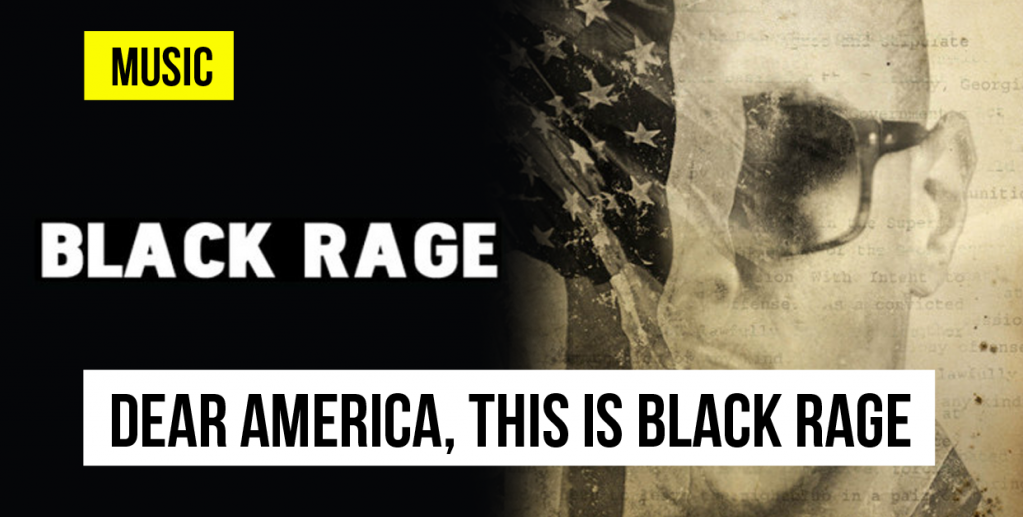
December 22, 2014, by Guest blog
Race and Rights: Ferguson Part 6
Post by Jasmine Gothelf
Below is the sixth of a multi-part series responding to events in Ferguson – the protests and civil disorder that began the day after the fatal shooting of an African American man, Michael Brown, by a white police officer in Ferguson, Missouri, on August 9, 2014, and continued after the decision on November 24, 2014 by a grand jury not to indict the police officer. Nottingham’s Race and Rights cluster and postgraduate reading group, based in the Department of American and Canadian Studies, examine Ferguson through the lens of their research. In this sixth posting in the series, Jasmine Gothelf explores the response of the hip hop community to police violence, including in Ferguson.
Too often the world is reminded that the idealistic perception of America as the Land of the Freeis far from accurate. The black abolitionist David Walker’s antislavery “Appeal” was published in 1829 and his words have as much relevance today as they did nearly 200 years ago: “See your Declaration Americans!!! Do you understand your own language? Hear your languages, proclaimed to the world, July 4th, 1776—‘We hold these truths to be self-evident—that ALL MEN ARE CREATED EQUAL!” My research explores slave narratives, abolitionist writings, anti-lynching imagery, black poetry of the 1930s-1950s and literature from the Black Power era, charting the literary protests against racism over the last 200 years. The African American protest aesthetic mutates into different forms, adapting in order to achieve social change in new contexts. For example, it mutated into hip hop and it is this medium that provides a protest platform today.
The juxtaposition of America’s ideals and the reality of racial suppression raises a multitude of questions within the hip hop community, encapsulated by the rapper Mos Def in his track “Mr Nigga”(1999):“Is it [America] fair, is it equal, is it just, is it right? Do you [do] the same shit when the [individual] is white?”Although these particular lyrics reflect the socio-racial climate of the 1990s, they are equally applicable to slavery, lynching, segregation and police brutality. Mike Brown’s and Eric Garner’s deaths are the most recent high-profile examples of treatment that is far from “equal,” “just,” and “right,” and hip hop artists continue the aesthetic strategies of canonized African American protest literature as they protest ongoing police brutality.
NWA’s “Fuck Tha Police” (1988) is one example of hip hop illustrating the need to protest against police brutality: “A young nigga got it bad ‘cause I’m brown and not the other colour so police, think they have the authority to kill a minority.” Ten years later and the rapper Tupac Shakur’s “Changes” (1998)lyrically criticized similar issues: “Cops give a damn about a negro? Pull the trigger, kill a nigga, he’s a hero. Give the crack to the kids who the hell cares? One less hungry mouth on the welfare.” Ten years on again, the rapper Nas released his album Untitled [Nigger] (2008), to assert the continued African American struggle against racism, enhanced visually through the album’s artwork that recycled the image of a slave in the 1860s to assert the lack of progress on race in America.
The hip hop community’s responses to the killings of Mike Brown and Eric Garner further demonstrate the genre’s place in the African American protest tradition by calling for action. This is showcased by Lauryn Hill’s “Black Rage” (2014). Dedicated to Michael Brown and other Ferguson victims, Hill addresses American suppression a “strange” thing that crawls beneath the “free” spirit of the nation. “Black Rage” employs the “skit” form, turning the comforting spirit of the track “My Favorite Things” (Rodgers and Hammerstein) into dark and twisted protest. This hard-hitting, lyrical attack on global issues, orated through Hill’s soulful, frustrated vocals, creates aural discomfort and disturbance. Moreover, by dedicating this track to the victims of Ferguson, Hill emphasizes that the struggle in “Black Rage”,”threatening your freedom… murder and crime… victims of violence, both psyche and body” is ever-present.
The rapper Kendrick Lamar’s latest track also comes to mind when assessing hip hop’s response to Ferguson and other socio-racial issues. Using the sonic sample of the Isley Brothers’ “That Lady”, the aural qualities of this track are upbeat. Nevertheless this sensory “safety” created by the “i love myself” lyric is contradicted by Lamar’s repeated hook: “The world is a ghetto with big guns and picket signs.” The song pulls the listener in through the superficial “niceness” of the track, then skillfully educates on the class and race struggle.
Finally, the rapper Killer Mike provided a moving example of protest literature during a gig last month in a speech before his set. The rapper’s emotion was clear through his speech as he explained the need of the suppressed to protest until America truly becomes the Land of the Free:“All thoughts to those who peacefully protested. My thoughts and prayers to those who could not hold that anger in.We will not live in your fear…we know you don’t value my skin. It is us against the mother fucking machine.”
Jasmine Gothelf is an MRes student in the American and Canadian Studies department, where she is writing a dissertation on hip hop in the black protest literature tradition. She is a member of the Race and Rights research cluster and PG reading group.
Photo: Promotional photograph for the release Lauryn Hill’s “Black Rage” and T.I’s “New National Anthem,” which both respond to Ferguson.

[…] flash-mob-die-in unfolded in Nottingham, I remembered the previous seven columns in this series. Jasmine traced the origins of contemporary black protest movements back to the antislavery voices of 1820s. […]